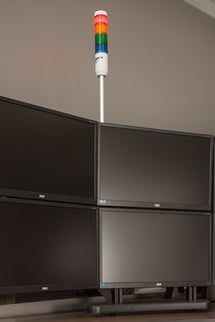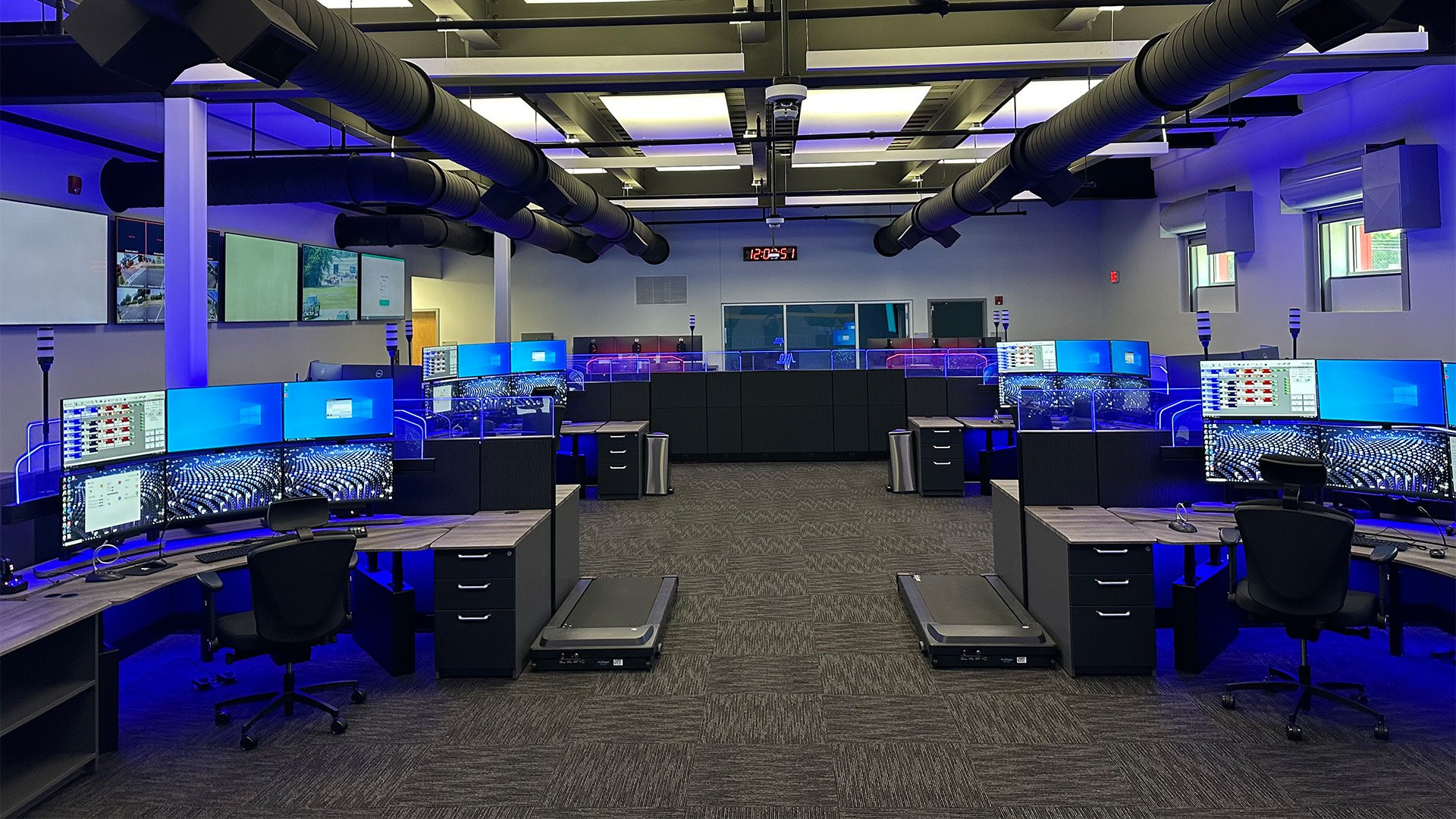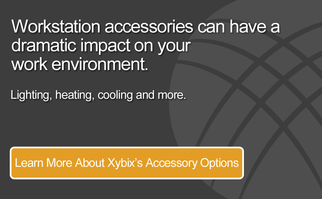
(Newly Updated for 2021)
Every time you pop into Costco, Kroger or Target, you’re guided by a status indicator light. Which checkout lanes are open and which ones are waiting for that dreaded manager assistance? Which self-checkouts are open and available? Is the line for the fast lane shorter than self-checkout? (Admittedly, this has nothing to do with the lights, but it makes me happy when it happens because I don’t have to decipher the code for my donuts.) No doubt you figured out the meaning of these checkstand lights by the time you were 2.
The status indicator lights used in 911 dispatch centers and other high-volume call centers are like the checkstand lights on steroids. They provide everyone in the room with real-time visibility to who’s on a call, who’s in need of help, who’s available to help, who’s on a break and more. The increase in productivity and responsiveness more than justifies the expense, whether you’re looking to add status indicator lights to an existing setup or plan them into a remodel, expansion or new build.
How to Flip the Switch
The cashier at your local Wal-Mart might just hit a button a few times to cycle among open, closed and “Help, I need a manager to void so I can enter the coupons!” And you have that option with simple status indicator lights. You get a call, you press a button and your light goes from green to red. You get off the call, press your button, and you’re green again. In a smaller call center, this may be enough to keep your coworkers quiet while you’re on a call and signal your availability to help when you’re not. But status indicator lights designed for busy call centers can do so much more:
|
 |
Think about your workflow, talk to your technical furniture vendor about the possibilities, and consult your IT department to deploy status indicator lights that truly meet your team’s needs.
Reap the Benefits
Employees, supervisors and—most importantly—your callers will appreciate the benefits of the status indicator lights.
- Employees easily communicate with coworkers: I’m on a call, don’t bother me. I’m available to help, so feel free to holler for help or transfer the call. I’m away from my desk. The ability to prevent interruptions alone can lead to a calmer and more productive day.
- Employees know how to ask for help: If you need help with a challenging call, the status indicator light makes it easy to ask for help. Look around and see who’s available or flash your light for a supervisor according to your setup and standard operating procedures. The simple ability to get help when you need it increases job satisfaction and retention.
- Supervisors gain visibility: Who seems to be taking the majority of the calls? Where might more training be needed? Who’s out smoking or kicking back while others take calls? Tie the lights into your systems and analyze the data to evaluate dispatchers and agents. You’ll be able to spot your stars and slackers in no time.
- Callers get better service: Improving communications among coworkers and between coworkers and supervisors ensures faster and better service, whether you’re helping a a community member with a fender bender or a consumer with a bill.
Lighting Logistics
For maximum benefit, everyone needs to be able to see every status indicator light in a dispatch center or call center. Whether you’re sitting, standing, behind a wall of monitors or obscured by a column, you should be able to glance up and see all the lights. Your technical furniture vendor should be able to provide mounting options and creative solutions to make this happen.
When it comes to the lights themselves, look for LED lights for their long lifespan, reliability and low energy usage. In addition, UL Listed certification ensures the lights meet nationally recognized safety and sustainability standards.
Take a look at status indicator lights in action in the following video, and give us a call if you have any questions.



